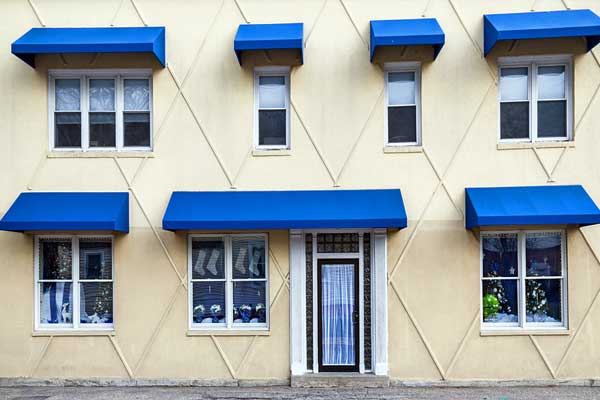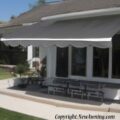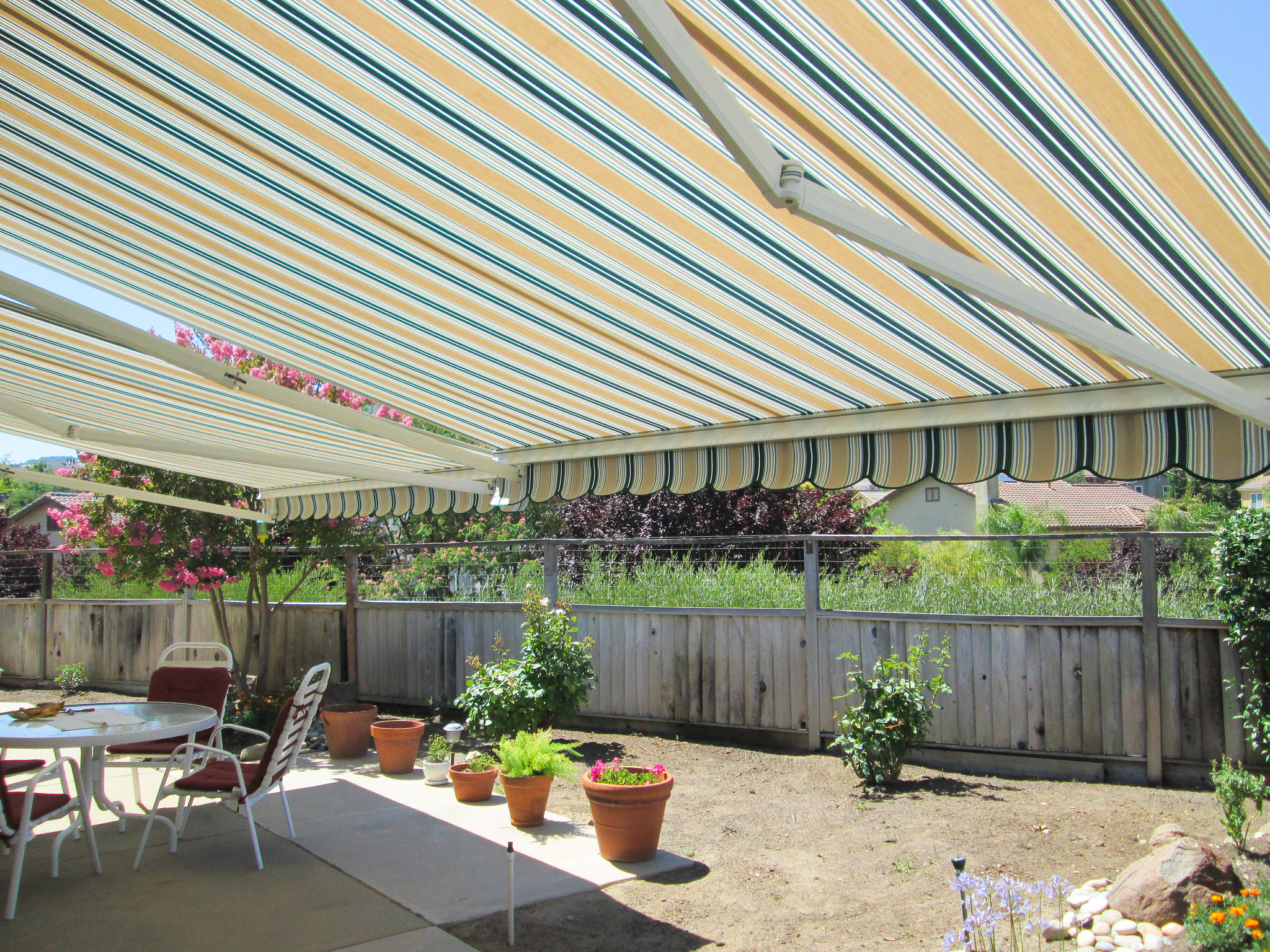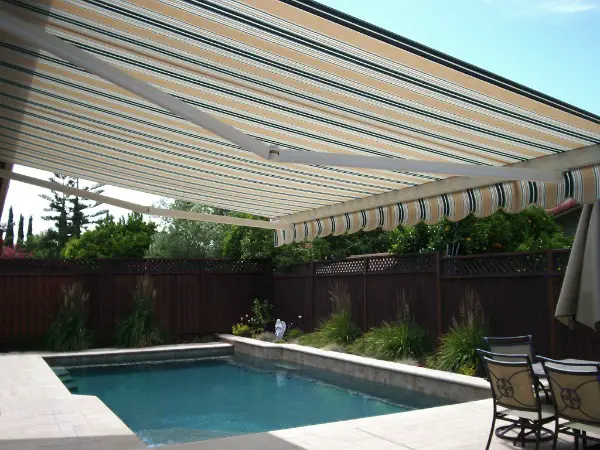Last Updated:July 03, 2025
What’s the Best Awning Fabric?
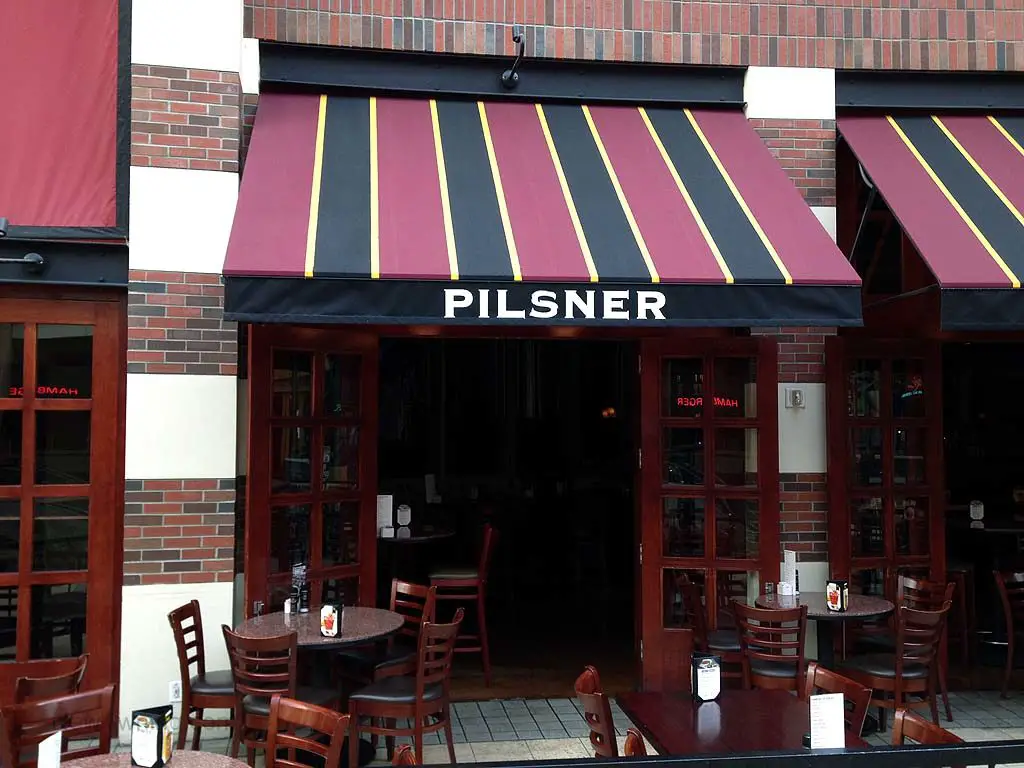
A couple months back, I attended a home and garden trade show specifically to speak with all the awning manufacturers. Throughout my chats with each company, I was amazed how everyone explained how their material was the absolute best and that the other choices were wrong for every application. Several reps pitched their product line without asking a single question about how or where we planned to install the awning. The goal of this article is to offer a neutral opinion with independent research.
Primary Types of Awning Fabric
The material in cloth awnings can be grouped into five major categories which are:- Canvas
- Vinyl
- Acrylic
Just like in clothing, there are advantages and disadvantages to each option. For perspective, denim is the best choice for a comfortable pair of jeans; and silk does an amazing job at being colorfast and retaining a pattern for a silk tie. That being said, both denim and silk would be terrible options for someone looking to make a bikini. I hope this analogy helps visualize why fabric choice is so important. With that background, I’ll go into depth for each choice below.

